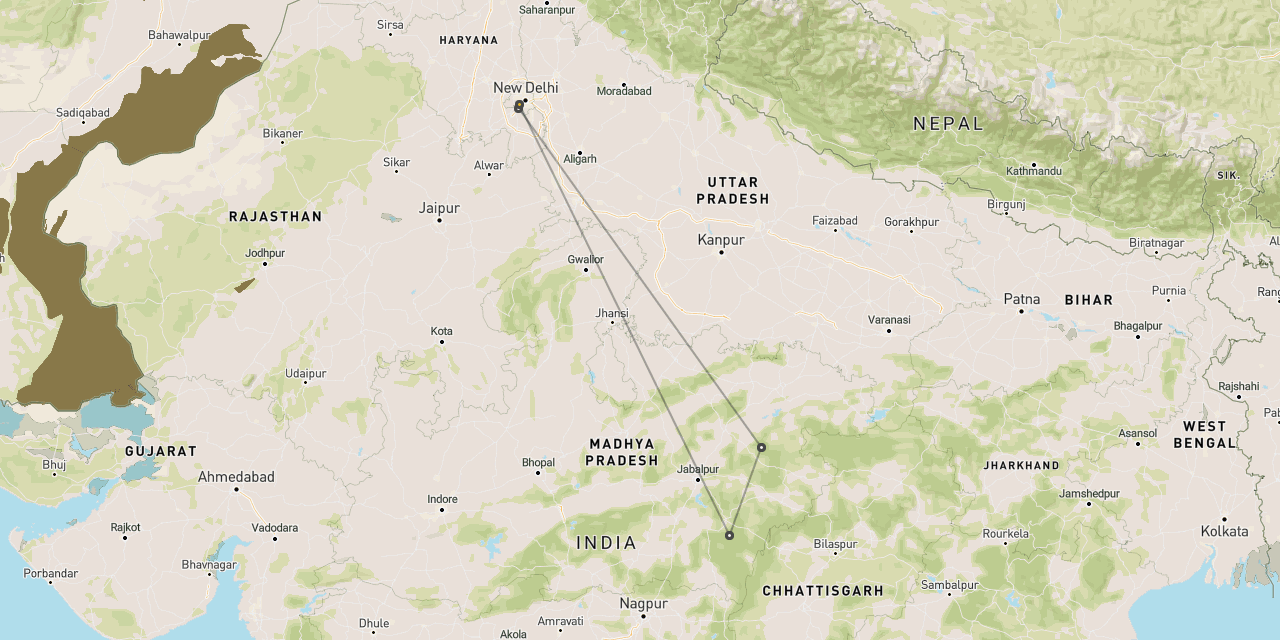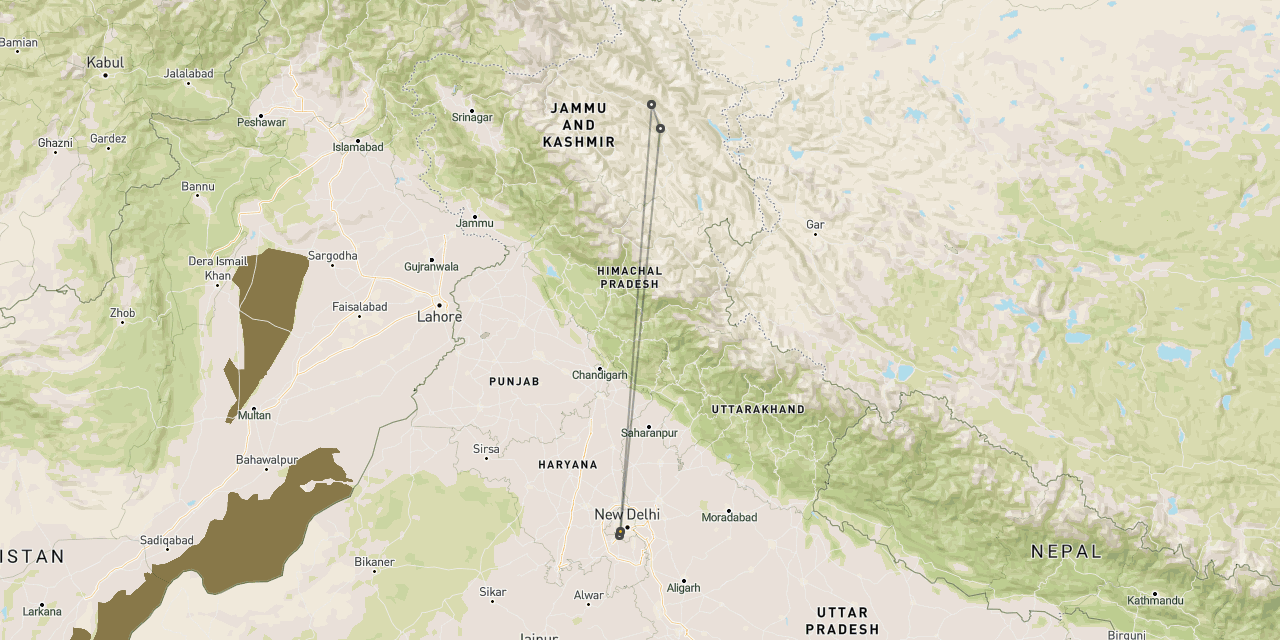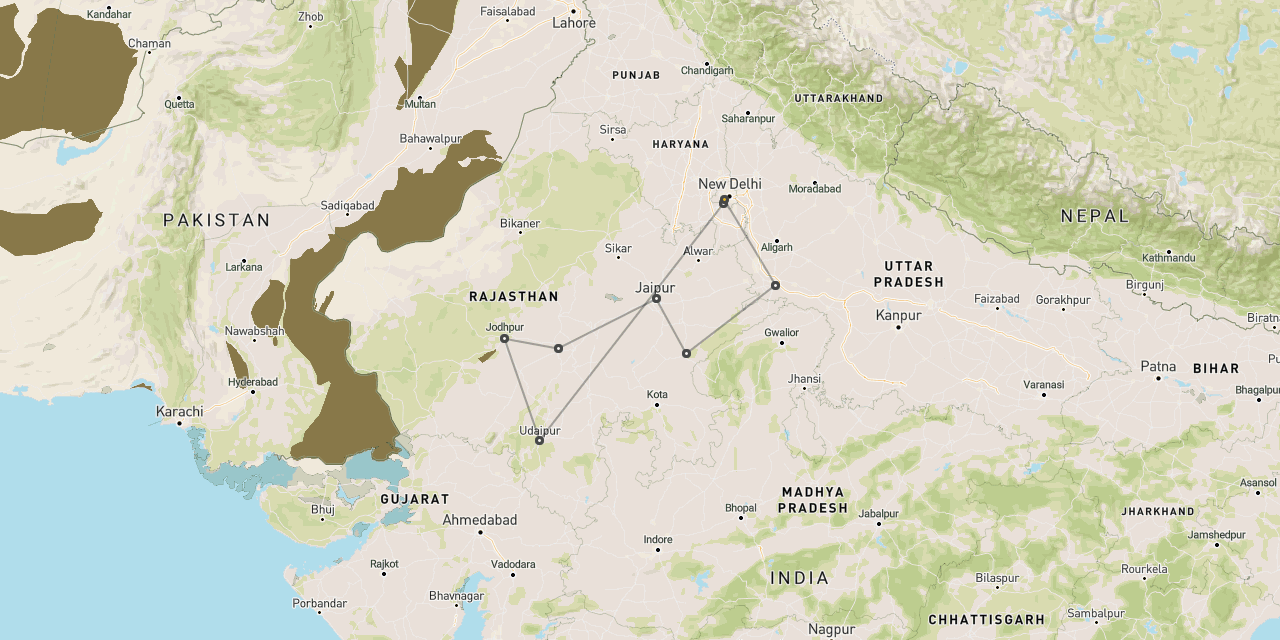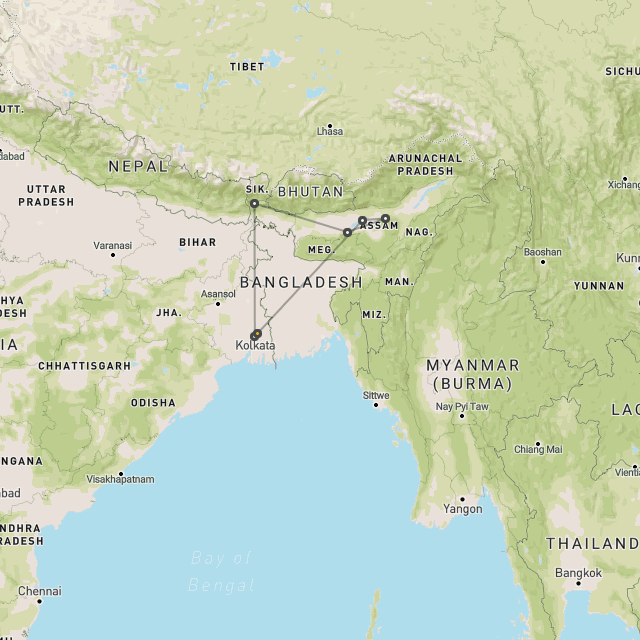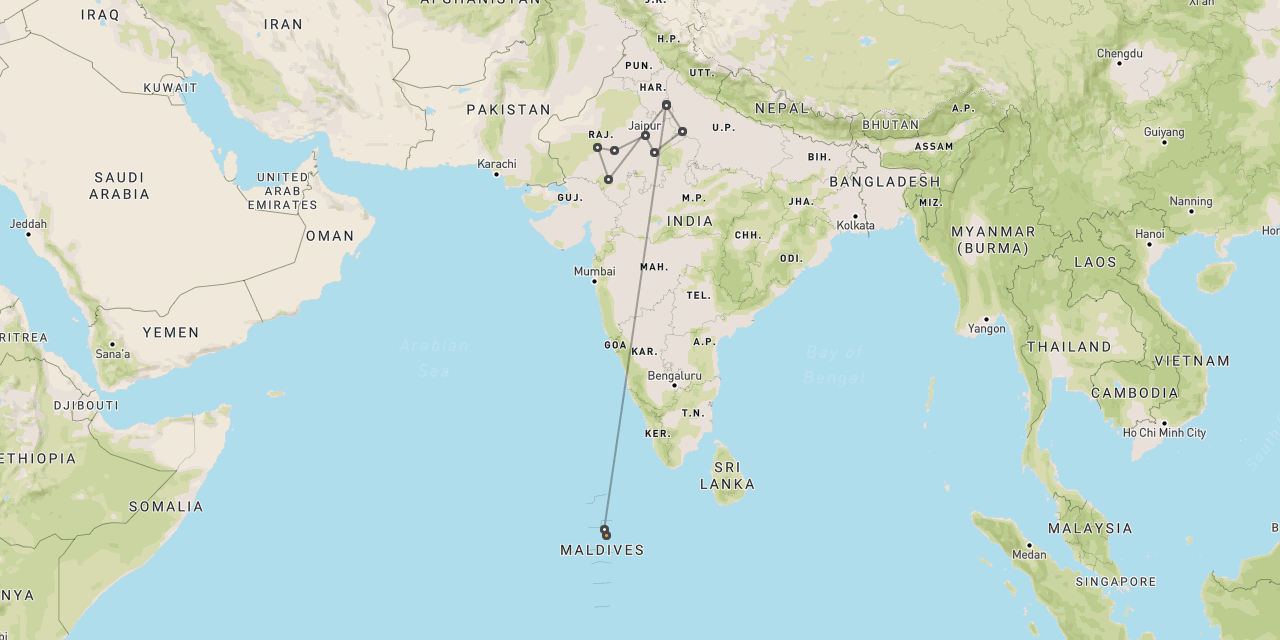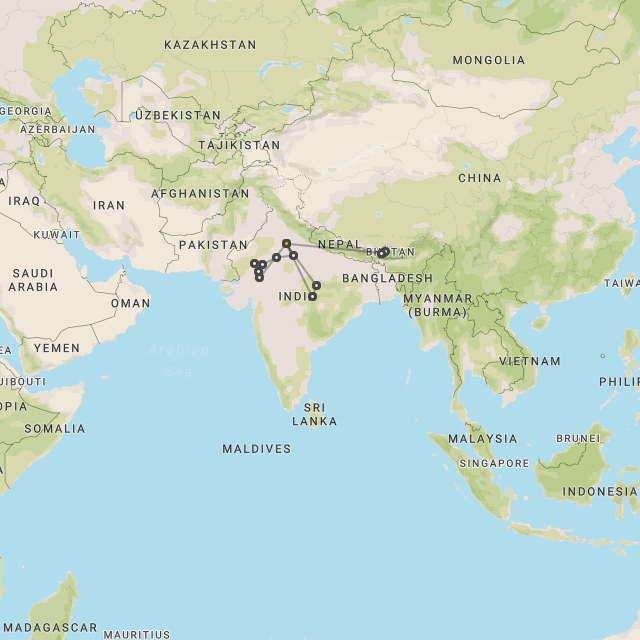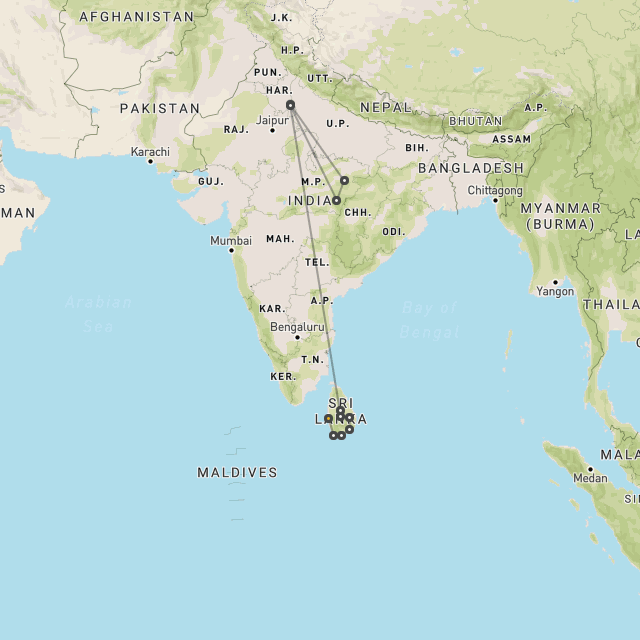
Travel to Goa
Goa
is an historic coastal town
with modern beach resorts

an historic Portuguese trade entrepot
Goa is located in the western coast of India, roughly 425 km (265 miles) south of Mumbai and is one of the leading beach resort areas on the subcontinent.
Although there have been significant towns along this coast for at least two thousand years, it was the arrival of the Portuguese in 1510 that really defined the area. Having established the impressive inland settlement of Velha Goa, these European interlopers held sway over this enclave for 450 years, all the way through the British Raj, until its annexation in 1961 into the Indian confederation.
Velha Goa (Old Goa) was sited alongside a river some 15 km inland from the ocean. Burdened by the ridiculous nickname of The Rome of the East, the town was nonetheless an impressive place, with some really grandiose colonial architecture, including the Sé Cathedral, which is still the largest Catholic church in Asia.
In 1843, the Portuguese relocated their capital from Velha Goa to Panaji, which was sited close to the river mouth and benefited from a healthier climate. This town remains a major urban centre to this day. It’s filled with Portuguese architecture, with streets of brightly-painted villas and lots of well-preserved churches, civic buildings and squares protected by the deep shade of huge mango trees.
The food in Goa deserves a special mention, being a fascinating blend of European, Indian and Brazilian dishes.
During the 1960s and 1970s Goa established itself as one of the world’s great hippy hangouts, initially centred around the village of Anjuna, 12 km further north. There is no doubt that this was initially a pretty cool scene, but during the intervening decades the allure has certainly reduced, as the place has become busier and more commercial. Although we generally recommend avoiding most of the accommodation options and the busy, dirty beaches in this area, the hippy market can be a pleasurable retro experience, filled with sandalwood joss sticks, mirror-spangled tapestries and intricately decorated bongs.
This western flank of the sub-continent is much greener and more tropical than most of India, experiencing an absolutely incredible deluge during the Jun-Sep monsoon. Whilst the tropical beaches are backed by significant populations, much of the mountainous hinterland, the Western Ghats, is cloaked in thick tropical forests, with very high biodiversity, including tigers and black panthers. However, safari into these areas is very much in its infancy and there are no decent camps at present.
Back down on the coast, the best beaches in Goa are those immediately to the north of the main river and, especially, the quieter and more remote stretches 25 km to the south. Whilst some of these beaches are very beautiful, it’s important to realise that they are very broad and potentially windy, they are used by local villagers and the rip-tide is sufficient to put most people off swimming.
However there are some significant opportunities for snorkelling and diving, particularly around the various offshore islets.
If you are looking for a beach location which has lots of character, history and local colour, then Goa may well be worth considering. But if you are looking for a more pure tropical beach paradise, then you should probably take a look at the Maldives.

Gallery
Map
The best time of year to visit the Goa area is generally considered to be during Oct-May, although there are considerable climatic variations over that period.
October is the transition period between the end of the monsoon rains and the start of the cool dry season. During the month the daytime temperatures usually rise to around 33C/91F, whilst the nighttime low temperatures remain up around 23C/72F. Rainfall remains high at around 125mm (5”) per month. Sunshine is around 8 hours per day (around 70% of daylight hours), meaning that skies are usually clear.
Nov-Feb is the main dry season. During this period the daytime temperatures usually rise to around 31C/88F, whilst the nighttime low temperatures hold up around 20C/68F. There should be very little rainfall. Sunshine is around 9 hours per day (around 90% of daylight hours), meaning that skies are usually clear.
Mar-May is the hot season, the often uncomfortable build-up to the main monsoon. During this period the daytime temperatures can climb steeply to around 33C/91F, whilst the nighttime low temperatures are up around 25C/77F. Rainfall usually increases through the period, from almost nothing in March to around 100mm (4”) in May. Sunshine is around 9 hours per day (around 85% of daylight hours), indicating that showers tend to be occasional, set against a usually clear sky.
Jun-Sep is the main monsoon season and is generally considered to be the least favourable time to visit. During this period the daytime temperatures drop off slightly to around 29C/84F, whilst the nighttime low temperatures remain up at a stifling 24C/75F. Rainfall climbs to a massive 850mm 34”) per month. Sunshine drops to around 4 hours per day (around 25% of daylight hours), meaning that skies are very often heavily overcast.
Getting there
By air
The main access is through Vasco da Gama Airport (GOI), located on an ocean peninsula 12km to the south of Panaji, with regular flights from cities including Ahmedabad, Bangalore, Chennai, Delhi, Hyderabad, Jaipur, Mumbai and Pune.
By luxury train
The Goa area is visited by the following luxury live-aboard train itineraries …
Train : Deccan Odyssey
- Maharashtra Splendor : 7 nights : Mumbai to Mumbai
By train
The Goa area is served by a number of different stations up and down the coast, with connections from a huge range of locations across India.
By road
The Goa area is rarely reached by road. Although there are some extremely interesting historical and natural sights in the region immediately inland, overland explorations of these are undertaken extremely rarely. But do ask us if you fancy it.
Where to stay
If you prefer smaller boutique properties and are primarily interested in the history and culture of this area, then Ahilya by the Sea is the standout property, by a distance.
The majority of the more beach and relaxation focused options in Goa are the larger and more upmarket resorts, most of which are located on the more remote southerly beaches.
a mix of culture and beach
let us know your thoughts about India
and we will help you create the perfect trip

Extraordinary tailor-made adventures,
from earthy and edgy to easy and extravagant
From around USD 2500 per person, you set the ceiling
Sample Trips
Here are some of our popular trip shapes

Get started on your trip
It’s never too soon to get in touch, we are here to help with every stage of your planning.
Best Lodges
We regularly inspect and photograph all of the the best lodges, to ensure that we always recommend the most suitable options
Key Locations
Take a look around related locations. Click ‘View more’ to explore locations further afield.












